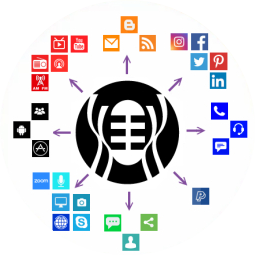FOR IMMEDIATE RELEASE
To schedule an interview, contact:
Michelle Tomao
727-447-4992 x201
michellet@theprgroup.com
Chinese Medicine Goes High-Tech: Forget the Sharp Needles! DIY Acupuncture Treatment Relieves Pain with Light
An interview with Dr. Larry Lytle, inventor of the Q-Laser
By stimulating specific acupoints on the body with needles, skilled acupuncturists say they are able to produce a wide assortment of benefits for their patients, everything from relieving migraines to curbing nicotine addictions.
Acupuncture has been around for thousands of years, but there are a couple problems with it.
Getting stuck with a sharp needle is not very pleasant, and forget about trying to do traditional needle acupuncture yourself. Even if you could locate the correct points, assuming they are located on an accessible part of the body, it would still require an extreme amount of skill to do it properly.
Thanks to the pioneering research of Dr. Larry Lytle, the many benefits of acupuncture are now available to everyone without the need of sharp needles or highly-skilled practitioners through the miracle of bio-stimulating light.
“I have devised a small hand-held diode laser that can stimulate the acupuncture points with a beam of light tuned to a specific frequency that benefits the human body and which you can easily use yourself,” said Dr. Lytle, who has authored several books on the health benefits of low-level laser light, including Low Level Laser Application Guide, which includes a section that shows the points that can be activated with low level laser light as a substitute for needles.
“One simply aims it at the area of the acupuncture point and switches on the laser for 30 to 45 seconds,” he said. “The comforting therapeutic and preventive medical effects that result often amaze practitioners who administer low level laser therapy on their clients, as well as those who use it on themselves.”
More than 2,500 studies have been conducted worldwide, which have shown that low-level lasers:
- reduce pain by stimulating cells to produce their own endorphins, a natural pain killer
promote faster healing by stimulating cells to increase the production of two major healing enzymes by as much as 75 percent
- reduce inflammation by as much as 75 percent
- increase bone-repair speed
- relax muscles and muscle spasms
- decrease swelling
- enhance the immune system by increasing the number of killer cells by 400-900 percent
- most importantly, re-energize cell membranes to allow transport of essential nutrients across cell walls, (nutrients will not cross an injured or sick cell membrane, thus slowing healing) allowing a healthy new cell to grow
To be healthy, the body’s cells need exactly the right kind and amount of energy, Dr. Lytle said. Every time you get injured or become sick, the energy flow to your cells is disrupted. Until the proper type and amount of energy is restored, you will remain sick or injured.
“That’s the beauty of the bio-stimulating light waves emitted by low level lasers,” said Dr. Lytle. “The waves increase blood circulation and re-energize the cells in your body with just the right kind and proper amount of healing energy. Properly used, low-level lasers can restore the correct energy flow to every cell in your body.”
Sample Interview Questions:
1. Can you explain why bio-stimulating light produced by a low-level laser has a healing effect on the body?
2. Is it possible to overdose while applying laser light to the body?
3. What types of physical conditions have been improved through use of low-level laser therapy, according to available clinical studies?
4. How long does it take to note improvement after applying healing light to an injured area of the body?
5. You have developed a handheld laser device for personal use called the Q-Laser. Can you tell us how it operates and what types of conditions it has been shown effective for?
6. Veterinarians also use the Q-Laser on dogs, cats and horses. What are some typical reasons animals get Q-Laser treatments?
7. Can the Q-Laser help the healing of sports injuries?
8. Where can listeners get more information about the Q-Laser and low-level laser therapy?
ABOUT DR. LARRY LYTLE DDS, PhD NUTRITION Dr. Lytle received his DDS Degree from the University of Nebraska in 1964. He then practiced dentistry in Rapid City, SD from 1964 to 1998. During his dental career, he earned Category II accredited status in the Academy of Laser Dentistry and was accredited in the American Academy of Cosmetic Dentistry. He also earned a PhD in Nutrition in 1979 and provided nutritional consulting in conjunction with his dental practice. He developed patents for low-level lasers and has published the Low Level Lasers User's Manual, The Healing Light, and other books on the therapeutic application of low-level lasers. He currently is a consultant for several companies in areas concerning low-level lasers and balancing the sympathetic/parasympathetic nervous systems for optimum human health. ### MEDIA CONTACT Michelle Tomao 727-447-4992 Ext. 201 michellet@theprgroup.com








